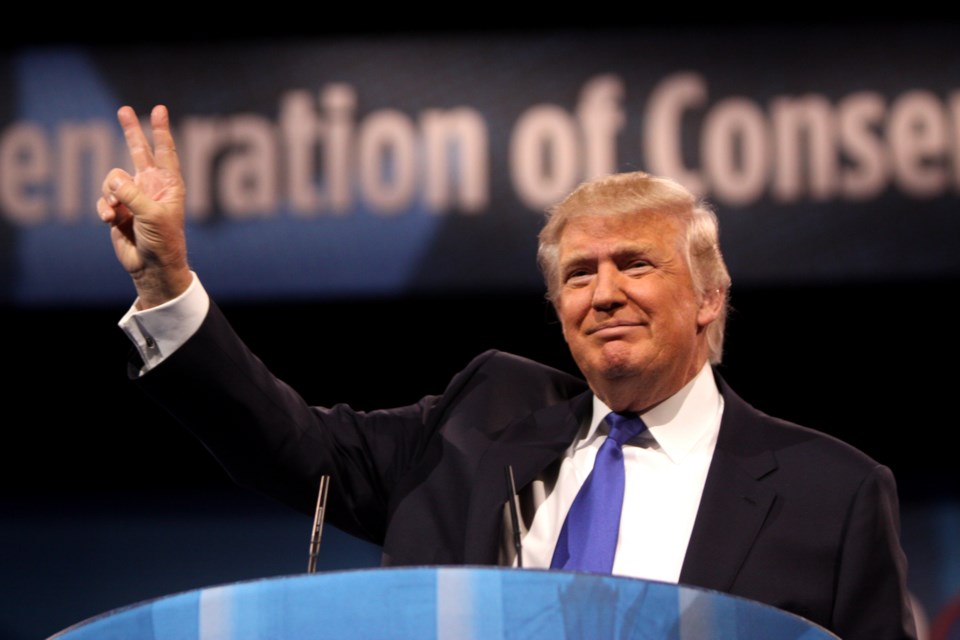While Canadian steel and aluminum producers are bracing for the impact of 25 per cent tariffs on all exports to the U.S., the rest of Canada is bracing for wider tariffs on other Canadian exports.
Ottawa has just three weeks to demonstrate to U.S. President Donald Trump that it takes his threats of crippling tariffs seriously, and address some of the issues blamed for their imposition—including the fentanyl drug trade—or face a trade war with the U.S. that Canada cannot win, and that would drive the country into recession.
But even if the federal government can appease Trump and avoid across-the-board tariffs, that would be a temporary reprieve in trade tensions that may intensify in the coming months as Canada and the U.S. prepare to revisit the Canada-U.S.-Mexico Trade Agreement (CUSMA), which is up for review in 2026.
Canadian governments and business will need to discuss trade concessions with the U.S., trade diversification and strategies for shoring up Canada’s economy.
“The priority at the moment is to get through this immediate crisis,” said Jock Finlayson, chief economist for the Independent Business and Contractors Association.
“Then the two big things that we need to do once we get through this crisis are, No. 1, prepare for the review of the Canada-US-Mexico Agreement. And second is improve the domestic business environment so more companies and entrepreneurs will actually want to invest and do business here, because we’re really struggling on that front.”
Last week, Canada braced for 25-per-cent tariffs on all Canadian exports to the U.S. except energy, which faced tariffs of 10 per cent, and responded with its own threats of retaliatory tariffs.
Bank of Canada modelling estimates tariffs and counter-tariffs would be inflationary for both countries and would reduce Canada’s GDP by 2.5 percentage points in the first year, and 1.5 percentage points in the second year.
“We will be thrown into a recession,” Finlayson said. “We would also have escalating unemployment. We would have bigger government budget deficits, very weak business investment, I think, and a sort of shattering of confidence on the part of both the companies and a lot of households.”
Canada got a 30-day reprieve from U.S. tariffs after the Justin Trudeau government announced a $1.3 billion border security plan that includes deploying Black Hawk helicopters and drones to the U.S. border, the appointment of a new “Fentanyl Tsar” and plans to list drug cartels as terrorist organizations.
In the meantime, the Trump administration announced Monday that tariffs on all imports of steel and aluminum from all countries, including Canada, will be implemented as of March 12.
BC Conservative leader John Rustad said B.C. could also play a part in addressing the fentanyl drug crisis which, according to the BC Coroner’s Service, accounted for 78 per cent of the 2,253 drug overdose deaths in B.C. last year.
“Trump has got a legitimate beef,” Rustad told BIV in December. “Our ports and our borders are not protected.”
He pointed to the 2022 Peter German report, Policing Our Ports, which warned of “pervasive infiltration of organized crime and the unfettered movement of illegal commodities through the ports” since the elimination of federal port police in 1997.
“It showed that less than one per cent of containers are checked coming into British Columbia,” Rustad said.
Rustad has suggested the creation of a provincial police force that would be responsible for policing B.C.’s ports to help address the fentanyl crisis and other criminal activity.
Finlayson said he doesn’t believe Trump will go through with his broader tariff threats, which would be inflationary and bad for both economies. But he said many of the responses to the tariff threat are things Canada and B.C. should be doing anyway. In B.C., that includes expediting major mining and energy projects as a way of shoring up B.C.’s economy.
Last week, Premier David Eby announced the fast-tracking of four new mines or mine expansions, nine wind power projects, the North Coast Transmission line project, natural gas pipeline projects and Cedar LNG—projects representing a total investment of $20 billion.
Trump’s tariff threat has also revived talk of “Buy Canadian” boycotts of American goods, the need to remove interprovincial trade barriers and trade diversification.
But Canada has already signed more than a dozen free-trade agreements with countries and regions outside of the U.S. over the past couple of decades, and those have done little to shift trade away from the U.S.
On its own, B.C. has tried to develop markets with other trade partners, with some success, as its export markets are more diversified and somewhat less reliant on the U.S. than many other provinces. Some sectors are more exposed to U.S. trade than others, however. Forestry, machinery exports and agriculture and seafood are the most exposed and most vulnerable to tariffs and other trade restrictions.
“Manufacturing in general will be hit extremely hard in all parts in B.C.,” Finlayson said.
One sector that is highly exposed to the U.S. now is natural gas, though that exposure will begin to decline when new LNG export terminals begin exporting natural gas to Asian markets.
B.C. Minister of Jobs, Economic Development and Innovation Diana Gibson suggested complacency may have played a role in not making greater strides in trade diversification.
Canada signed the Comprehensive Economic and Trade Agreement (CETA) in 2017 to improve access for Canadian exporters in the EU, and the Comprehensive Trade and Progressive Agreement for Trans-Pacific Partnership (CPTPP), which includes 11 countries, in 2018.
In 2023, bilateral trade between Canada and the EU reached $126 billion, according to the Canadian government—a 65-per-cent increase over pre-CETA trade. According to a 2024 Asia Pacific Foundation of Canada report, merchandise trade between Canada and other CPTPP members grew from $48 billion in 2018 to $66 billion in 2023.
To put those numbers in context, that $66 billion in trade that Canada did with CPTPP members in 2023 is how much bilateral trade Canada does with the U.S. in a single month. Annually, Canada and U.S. bilateral trade is worth more than $1 trillion, with Canadian exports to the U.S. valued at $593 billion in 2023.
Finlayson said it’s “a pipedream” to think trade diversification can ever replace the U.S. as Canada’s most important trade partner.
“There is no alternative to the U.S. market for a lot of our industry, certainly not one that can be realized within the short to medium term,” he said.





